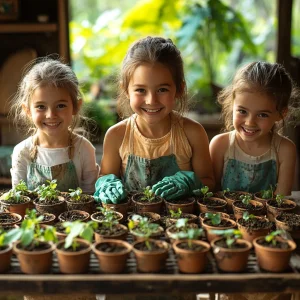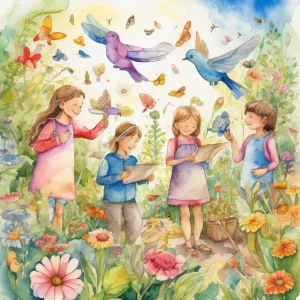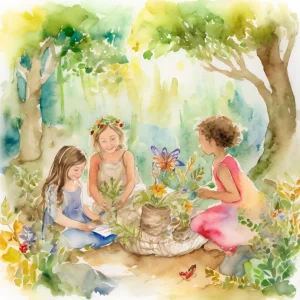Activity
Similar Activities
Enchanted Nature Walk: The Sensory Adventure
Children’s Age: 1–1.5 years
Activity Duration: 10 minutes
Engage your 12 to 18-month-old in the Sensory Nature Walk to boost their language, sensory, and social skills through outdoor exploration. Prepare for the adventure by dressing you…
Activity Duration: 10 minutes
Seasonal Textures: Infant Sensory Exploration Activity
Children’s Age: 3 – 6 months
Activity Duration: 10 minutes
Engage infants aged 3 to 6 months in a sensory exploration activity focusing on seasonal textures for motor, adaptive, and language development. Gather soft fabric swatches, natura…
Activity Duration: 10 minutes
Seasonal Textures: Infant Sensory Exploration Experience
Children’s Age: 0 – 3 months
Activity Duration: 5 minutes
Engage your 0 to 3-month-old infant in a sensory exploration activity using seasonal textures to support motor and language development. With soft fabric swatches and seasonal item…
Activity Duration: 5 minutes
Nurturing Nature: Planting Seeds of Empathy for the Earth
Children’s Age: 7–10 years
Activity Duration: 30 minutes
The "Planting Seeds of Empathy for the Earth" activity is designed to teach children about empathy, ecology, and environmental protection through hands-on seed planting. Children w…
Activity Duration: 30 minutes
Sensory Music-Making Session: Sound Story Drawing Adventure
Children’s Age: 2–2.5 years
Activity Duration: 5 – 20 minutes
A sensory music-making activity using household items to enhance sensory development and introduce children to the world of music.
Activity Duration: 5 – 20 minutes
Enchanted Tales: Family and Friends Story Theater
Children’s Age: 2–7 years
Activity Duration: 10 – 25 minutes
An interactive storytelling activity promoting language, academic, and social development.
Activity Duration: 10 – 25 minutes
Nature Language Exploration and Journaling Adventure
Children’s Age: 4–12 years
Activity Duration: 15 – 30 minutes
Let's go on a Nature Journaling Adventure! We'll explore nature, practice writing, and learn new words in a foreign language. Grab your nature journal and pencils, and if you like,…
Activity Duration: 15 – 30 minutes
Enchanted Forest: Nature's Treasure Hunt Adventure
Children’s Age: 11–15 years
Activity Duration: 30 – 45 minutes
Explore the wonders of the outdoors with "Nature's Treasure Hunt," a fun and educational activity for children. This outdoor adventure boosts play skills, academic knowledge, and s…
Activity Duration: 30 – 45 minutes
Enchanted Forest Tales: Nature Play Theater
Children’s Age: 4–6 years
Activity Duration: 15 – 25 minutes
Engage children aged 48 to 72 months in the "Nature Play Theater" activity, fostering communication skills and ecological awareness. Set up an outdoor performance area with natural…
Activity Duration: 15 – 25 minutes
Nature Sounds Sensory Experience for Infants
Children’s Age: 0 – 3 months
Activity Duration: 10 minutes
Engage infants aged 0 to 3 months in a Nature Sounds Sensory Experience to support language development by listening to and exploring nature sounds. You will need a soft blanket or…
Activity Duration: 10 minutes


























